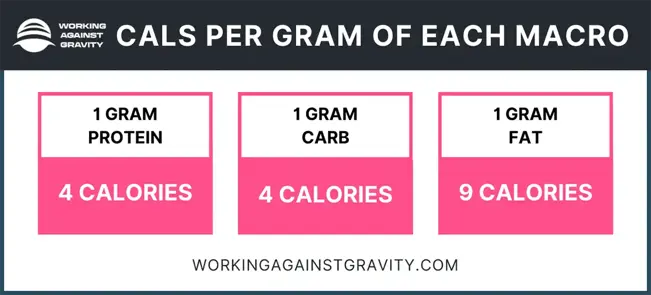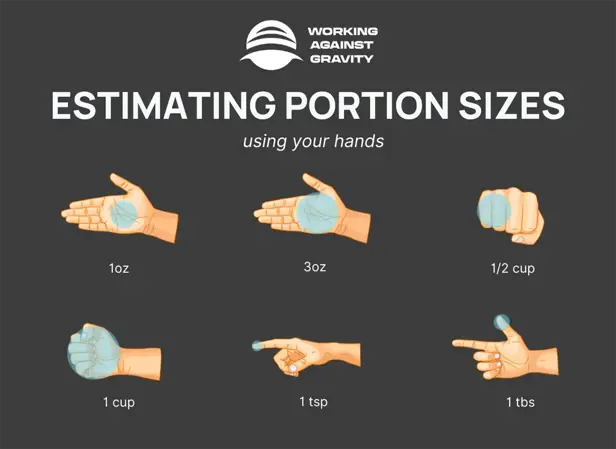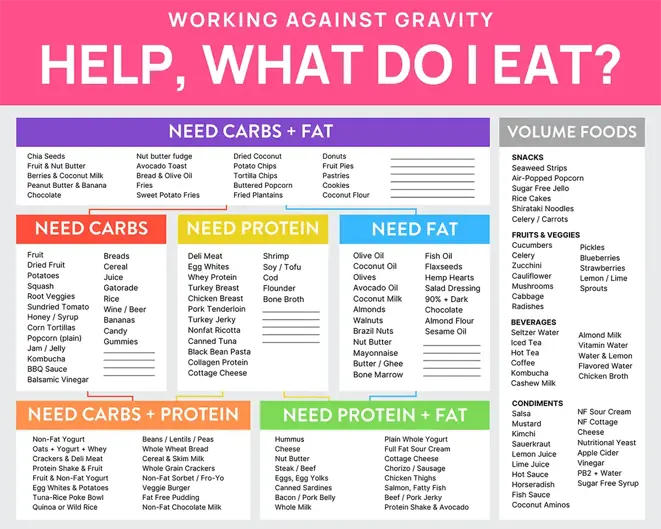Let’s Start with the Basics: What are Macros (Macronutrients)?
The three macros are protein, carbohydrates, and fats. They are the building blocks of food, and each of them serves a specific function in your body.
Each macro consists of calories—this is why you’ll often hear the phrase, “Not all calories are created equal.”

The “best” macro ratio depends on factors like your body, goals, and food preferences (calculate yours for free here!).
Advertisement
Protein
Protein helps support lean muscle mass growth and retention. It also contains essential amino acids that help your muscle to fully repair and recover from daily use and intense training sessions. It is involved in hormone and enzyme production, and it is also the most satiating macro—a diet high in protein that helps keep hunger at bay.
Carbs
Carbohydrates are your body's most readily available energy source, whether it is the fuel needed for basic bodily functions (ie: breathing, digestion, etc) and living your everyday life or for your training. For athletes who compete in endurance sports or higher-volume exercise, carbs work to replenish glycogen stores in your muscles that deplete throughout your session. This translates into better recovery and higher levels of performance.
Fat
Omega fatty acids such as EPA and DHA help to support cardiovascular health, joint health, and also aid in digestion. Further, fat-soluble vitamins A, D, E, and K require sufficient dietary fat in order to be properly absorbed by the body. Fats also help to keep your hair and nails strong and promote skin health.
Tracking macros ensures you eat enough of each macro and optimize your nutrition to support your goals—whether that’s losing body fat, gaining strength and muscle mass, or improving performance in a chosen sport.
While on the surface, it might appear as if eating within the framework of a macro prescription would be restrictive, it can be quite the opposite.
Advertisement
Nothing is “off limits" with a flexible dieting approach, and finding a balance between what you enjoy and what your body needs helps you achieve nutritional freedom while still working towards your goals!
Sound too good to be true? It’s not as complicated as you might think. Follow these simple steps to get started.
How to Start Counting Macros
Step 1: Set Your Macros
You have two options here.
If you want to shift the “heavy lifting” to us, sign up for 1-on-1 nutrition coaching with Working Against Gravity. One of our certified experts will get to know you, your body, your goals, and so much more, then build, monitor, and adjust a customized program.
Advertisement
Not quite ready to dive into personalized programming and ongoing accountability? Calculate your own macros for free here, or dive into the specifics of counting macros for weight loss with this in-depth guide.
Step 2: Buy a Food Scale
The more accurate you can be about measuring the foods going into your body, the more consistent and measurable your results will be. A food scale allows you to measure the food you eat in grams and ounces. This will help you determine how many macros you eat based on your portion sizes.
It might seem like extra work at first, but you have a few options if that is the case.
- Stick it out and give yourself time to get used to the added step. The more you do it, the easier and faster it will get. Remember, it is about progress over perfection.
- Try estimating portion sizes using your hands or by using cups and spoons. Then, move on to using a food scale.
- Take the macros out of it. Instead of stressing about actually hitting your macros, it can be helpful to track current intake while you get used to your food scale and tracking app (more on that below). Then, start aiming for targets.

Step 3: Track your intake with a food-tracking app
This is where you’ll actually “track” your macros. Record your food in a food tracking app as you eat and measure it. Your app has a food database that will tell you how many grams of protein, carbs, and fats are in your food based on your portion sizes. Your app will also do the math for you as you eat to let you know how many macros you’ve eaten and how many you have left.
Advertisement
Our go-to tracker is MacrosFirst. Built from the ground up with macro tracking in mind, this free app includes a comprehensive food database, an easy-to-use interface, a food barcode scanner, precise target setting, and much more. Paid alternatives include MyFitnessPal or myMacros+.
(Starting to feel a little confused about calories, macros, grams, and ounces? This article will help!)
Step 4: Head to the grocery store
Environment and preparation play an important role in the success of a macro-tracking approach to nutrition. Filling your fridge and pantry with whole, minimally processed foods ensures you have what you need on hand to reach your macro targets. Not sure which foods to buy for each macro? Check out our handy “Help! What Do I Eat?” infographic below!

We’ve also covered shopping at some of our favorite grocery stores, including Whole Foods, Trader Joe’s, Costco, and Woolworths.
Advertisement
How to Count Macros: Pro Tips for Beginners
Here are a few more quick tips to come back to as you start counting your macros.
- Include a protein, carb, and fat source at each meal. There’s nothing worse than reaching the end of the day and finding you’re short in one (or multiple!) macros. Make sure to get all three macros in every meal, and you’ll set yourself up for success. When you’re just starting, dividing your macros relatively evenly through your meals can be helpful.
- Log your meals ahead of time. Better yet, do a bit of meal prep! The further in advance you plan, the easier it is to hit your macro targets. Then, you can use your logs as a menu for your day and won’t feel like you’re spending too much time doing “Macro Tetris.”
- Brush up on your understanding of nutrition labels. Here is a complete guide to nutrition labels—from serving size to calories and everything in between.
- Focus on whole, high-volume, unprocessed foods. While it’s true that most things can fit within the framework of your macros, allocating the lion’s share to whole foods keeps you feeling your best and provides your body with valuable micronutrients.
Building a Sustainable Approach to Nutrition While Counting Macros
Learning the ins and outs of the flexible dieting approach and tracking macros will help you build the nutrition habits and skill sets that will last you a lifetime.
You don’t have to track macros forever (most people don’t!), but it does help you bring awareness to portion sizes and how much you need to eat based on your body, goals, training style, and other factors that play into overall health.
A 1-on-1 WAG Nutrition coach can help you take the guesswork out of what to eat and how to reach your macro targets. They’ll customize a program for you (after getting to know a lot more about you) and then check in with you each week to determine what is working and what isn’t, answer questions, and provide ongoing support, accountability, and program adjustments. Learn more about our membership options here.
Advertisement






